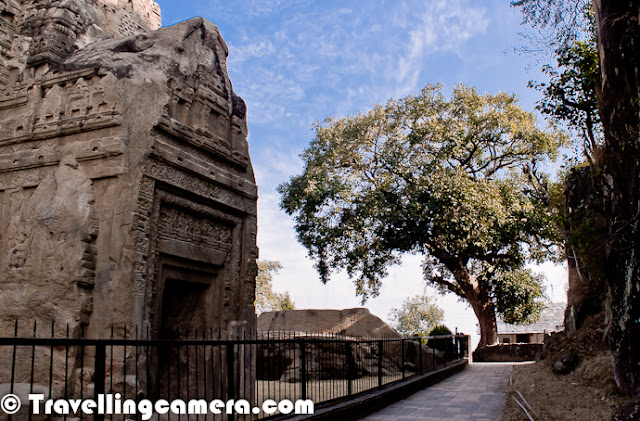Architecture from the past is a priceless gift that our ancestors have left behind for us to cherish. Even when some of the buildings constructed today struggle to keep standing, some of these magnificent buildings constructed centuries ago have withstood the test of time and survive as a testimony to the strong foundation our ancestors had laid for the humankind. One such building is the complex that houses the rock-cut monolithic temples of Masroor in the Kangra district of Himachal Pradesh.
The 3-kilometre walk from Pir Bindli to the temples reveals new treasures at every turn. But none of these are as rewarding as the first sight of the temples themselves. Tucked away amidst rural Himachal, just 38 kilometres away from the bustling town of Kangra, these temples are stunning examples of Indo-Aryan architecture. The entire complex contains about 15 sikhara temples and a rectangular water tank. Intricate carvings and beautifully ornamented sculptures make one wonder at the skills and perseverance of the people who were responsible for cutting these shapes out of the tough sandstone rock without the support of modern technology by their sides.
In spite of the persistent presence of the temples, very little is known about when, how, and by whom, these temples were constructed. Even though there are legends associating these temples to Pandavs, a date of 8th – 9th Century CE has been assigned to the temples, based on the architecture and the sculptures. One fact that is known almost for sure is that ever since they were created, the temples stood more or less intact till the devastating earthquake of 1905 during which many of its sikharas fell down and many pillars developed cracks. But the main Sikhara still stands and is home to black-stone idols of Ram, Sita, and Laxman. However, the presence of the figures of Shiv in the doorway also indicates that this temple was originally dedicated to Lord Shiv. As is apparent, there are many mysteries yet to be solved about these marvels.
Right now, there is increasing focus on developing these temples as a tourist attraction for rural as well as foreign tourists. Although it is true that visiting and learning about these ancient structures is an inseparable part of the process of enrichment and education, we need to tread carefully. Each crumbling wall and each falling stone is a part of history lost to us forever. Therefore, any tourism that crops up here needs to be monitored carefully and has to place conservation above everything else so that it does not cost us any part of our heritage.







.jpg)
Comments